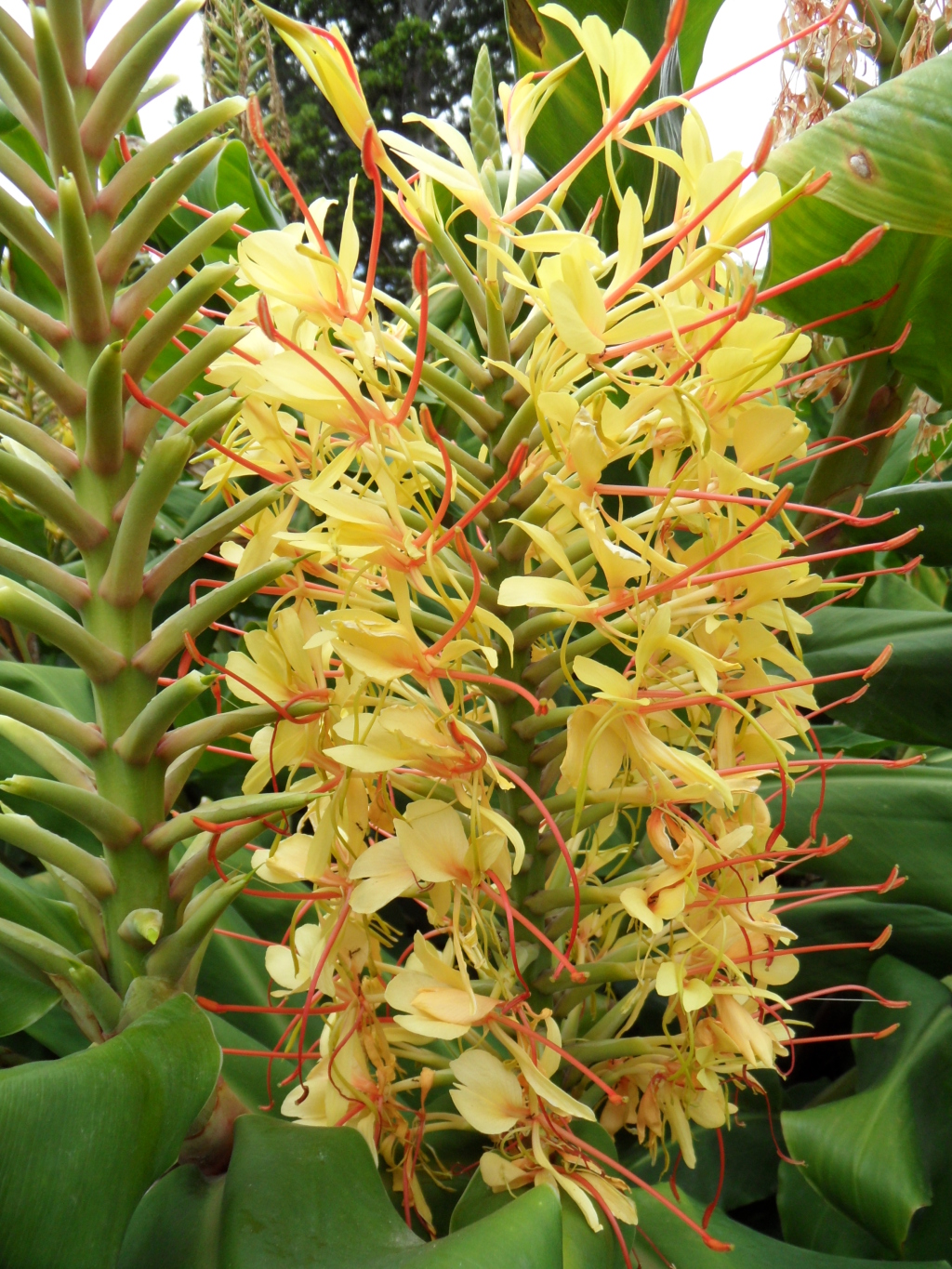Zingiberaceae
Rhizomatous, aromatic herbs; rhizome fleshy, sometimes tuberous, roots often tuberous. Stems erect, usually short. Leaves simple, opposite or alternate, distichous, lower leaves reduced to sheaths; sheath open; venation pinnate, parallel. Inflorescence terminal on leafy shoots or on short stems arising from the rhizome, in a few to many flowered raceme or spike, bracteate. Flowers bisexual, zygomorphic; sepals tubular, sometimes spathe-like, apex 3-toothed; petals tubular at base, 3-lobed above; stamens in 2 whorls, the outer reduced or of 2 petaloid staminodes, the inner of a single fertile stamen and a labellum formed from 2 staminodes, anther 2-locular, dehiscing by slits or pores, connective dorsal, sometimes crested; ovary inferior, 1- or 3-locular; ovules many; style 1, held between anther locules; stigma expanded above anther. Fruit a capsule or fleshy berry; seeds arillate.
About 50 genera and c. 1300 species, mainly in the tropics, centred in South East Asia; 9 genera and 18 species (6 naturalised) in Australia; 1 species naturalised in Victoria.
Many members of this family are of economic importance as spices and medicines, including ginger, turmeric and cardamom.
 Spinning
Spinning

